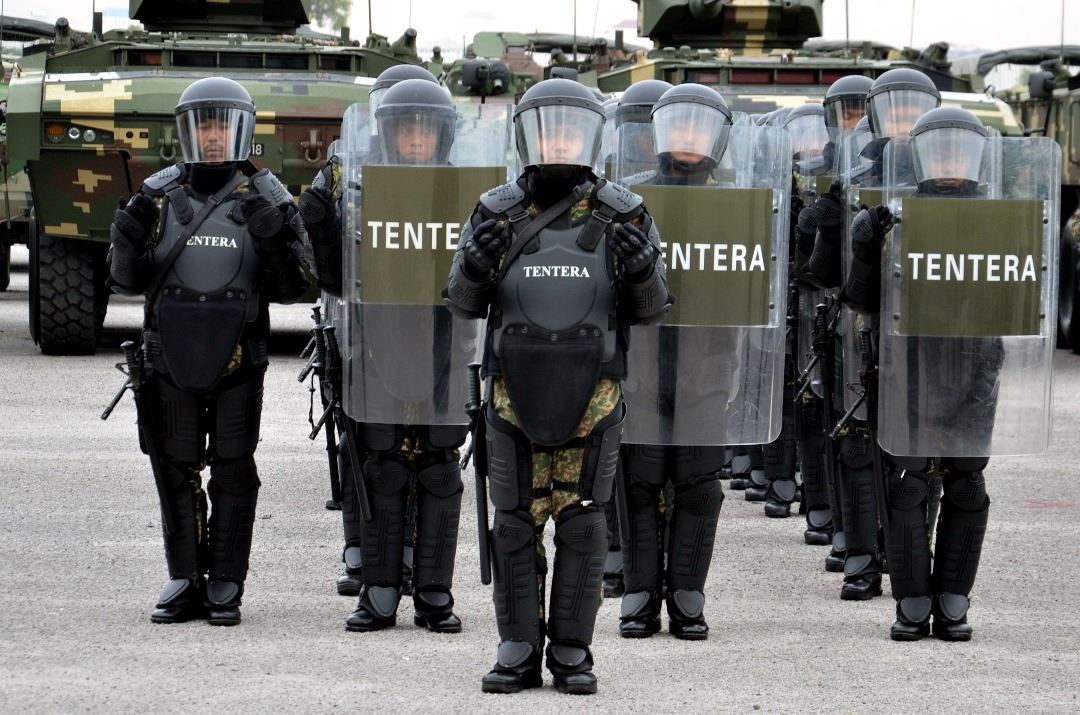
SHAH ALAM: Bad Moon Rising. As you are aware with the upcoming general elections, the authorities are preparing for troubles. With the police already committed to various other security operations, the Army is expected to shoulder part of the responsibilities of keeping the peace, if anything bad breaks out of course.
For this reason, Army formations across the country has been training for the possibility of such. As this things are basically routine stuff, this is usually covered by BTDM Online, the Army’s own news network.

As for the preparations it is interesting to see the Army is putting up its armoured vehicles including tanks for the security operations. For the recent the World Urban Congress (Feb. 7 to Feb. 13) summit in Kuala Lumpur, the Army’s formation were also equipped with Gempita and Condors but no Pendekars were seen.
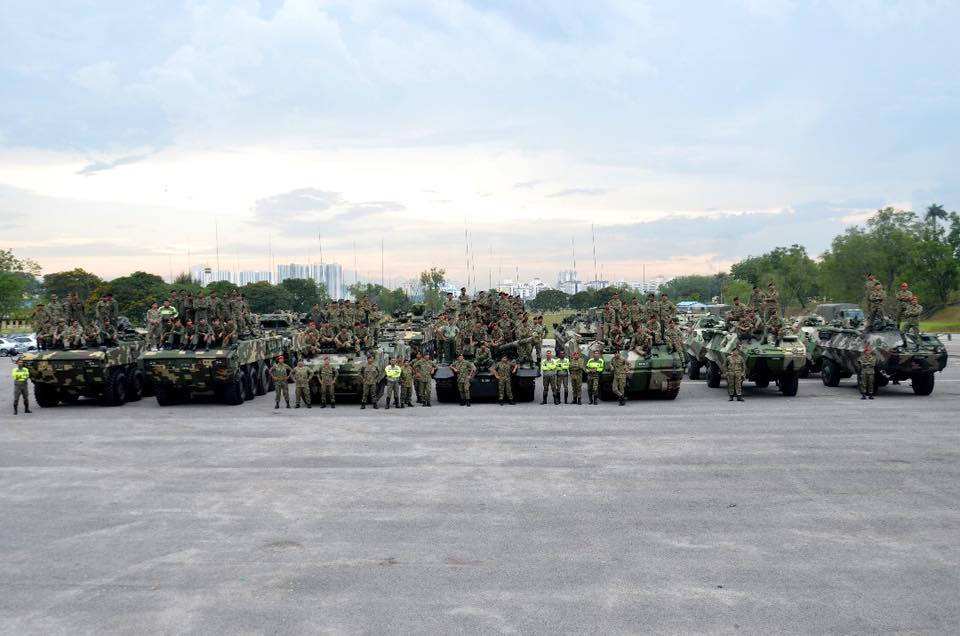
For the GE operations, the Pendekar and the Adnan/MIFV have been added to the mix. Hopefully, the general elections will come and go peacefully.

Anyhow, Australia has announced that the Rheimental Defense Australia as the preferred tenderer for Land 400 Phase 2. This means theBoxer CRV, has beaten out BAE Systems Australia AMV-35 offering.
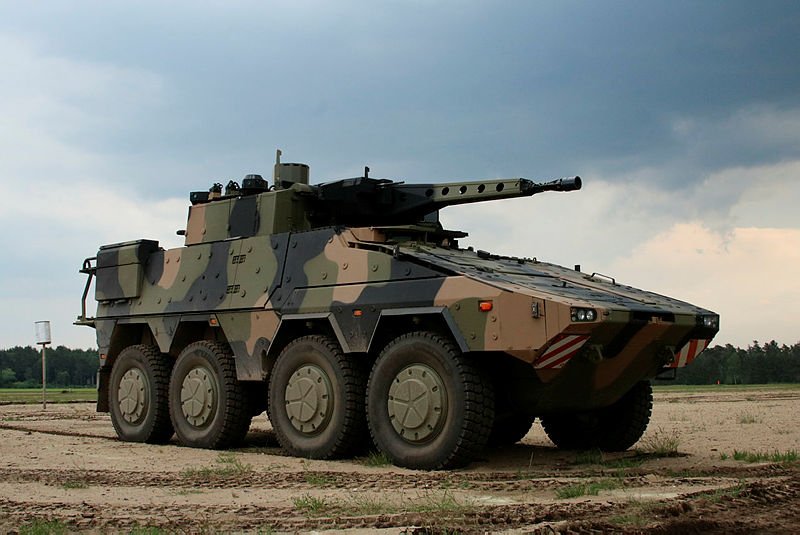
The project, worth up to AUS$5 billion (US&3.93 billion, RM15.3 billion), will see Rheinmetall deliver up to 225 combat reconnaissance vehicles to the Australia Army.
— Malaysian Defence.
If you like this post, buy me an espresso. Paypal Payment

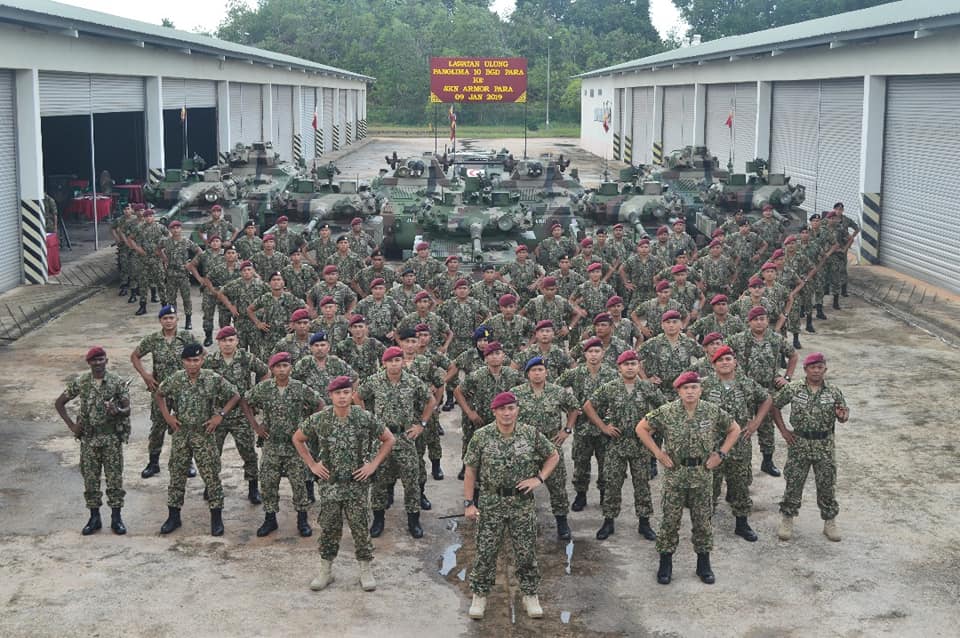
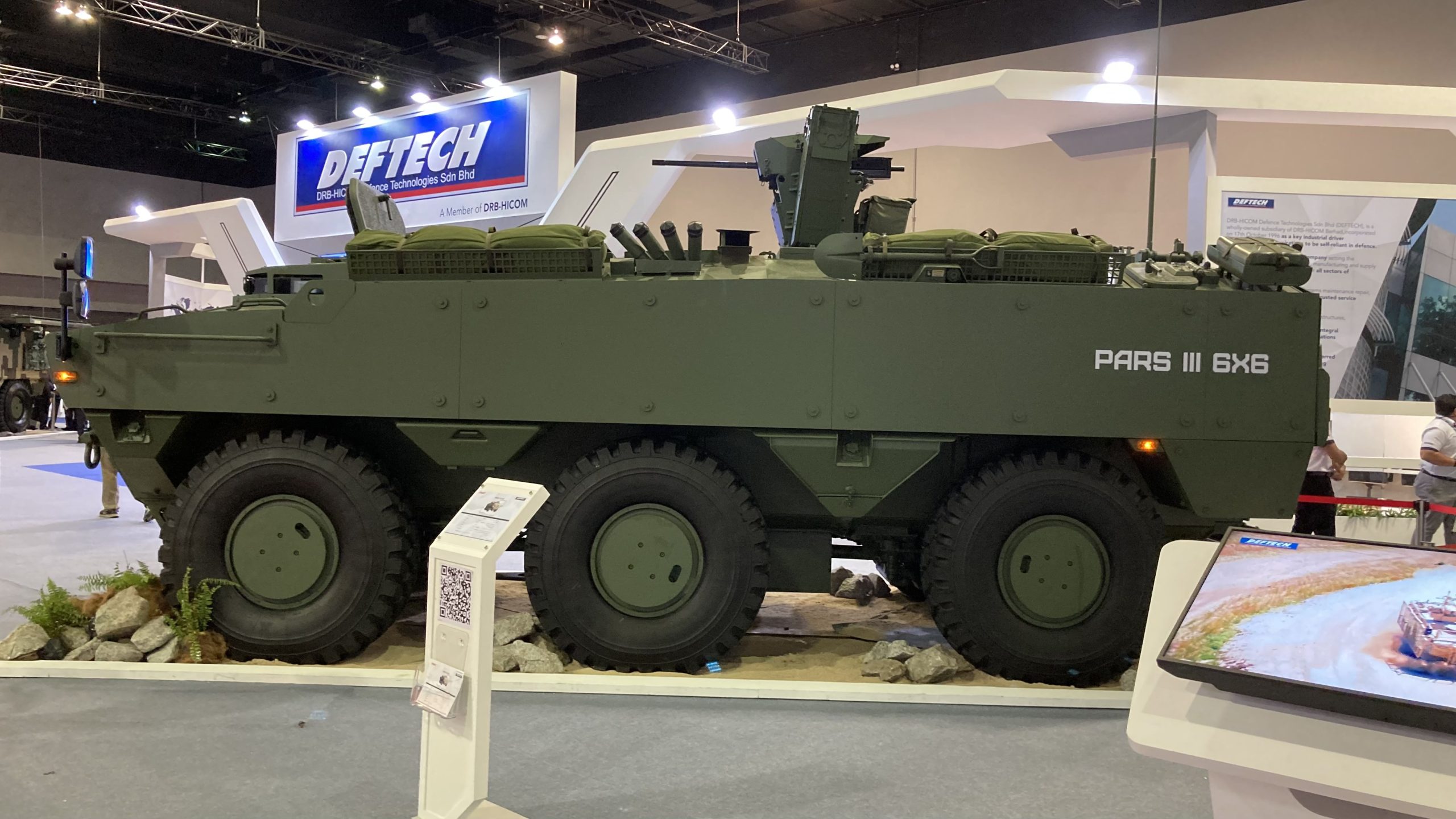

Land 400 phase 2 is for the ASLAV 8×8 replacement. Next would be the phase 3, which is to replace the M113s. It is expected to be a tracked platform but it could be more Boxer CRV variants instead. Do also note that australian army is only about 20% the size of malaysian army, and most of its formations are motorized (they got 1000+ bushmaster MRAPs) due to the size and terrain of their country.
@ marhalim
“The project, worth up to AUS$5 billion (US&3.93 billion, RM15.3 billion)”
As per usual australian cost calculations, that includes all the sustainment and upgrades until it is phased out. The cost of building 200 Boxer in Australia is put at AUS$1.25 Billion. As for the Gempita, we don’t know how much ingwe missiles and 30mm shells cost from the overall budget.
The contract is for 211 Boxers in recon, command, fire observation, repair, recovery, and I think ambulance variant too.
They are very capable vehicles. The standard CRV is equipped with 30mm cannon, commander-operated RWS, 2 Spike ATGMs, AMAP armour modules and Rheinmetall’s Active Defensive System which is 1 of if not the fastest-reacting hardkill APS in the world. Baseline protection without modules is STANAG 4.
However at 35+ tons they can only fit 1 Boxer in a C-17 of which the Aussies have only 8.
If there is no political stability the rating agencies will downgrade us which means higher interest
@ Chua
Some comments in the net:
“The internal Army logic as supplied openly in a few of the comments here is almost wholly driven by simple tactical thinking with any operational or strategic considerations deemed to be irrelevant to the issue of capability. I suspect the hyper enthusiasm for Boxer within the Armour mafia will diminish rapidly once the reality sets in that the chances of deployment for 35+ton ‘recon’ vehicles and 75+ ton M1A2 upgraded MBTs will be close to zero”
Interesting points
– simple tactical thinking with any operational or strategic considerations deemed to be irrelevant to the issue of capability. It is highly protected yes, but can you drive it on rural roads without destroying them? How many roads can sustain 35ton weight? What kind of turning radius does it have, can it be operated in narrow urban roads? How do you deploy and use such a big IFV?
@… “It is highly protected yes, but can you drive it on rural roads without destroying them? How many roads can sustain 35ton weight? What kind of turning radius does it have, can it be operated in narrow urban roads? How do you deploy and use such a big IFV?”
Australian DOD found that the benefits of heavy wheeled vehicles top out at the 35-ton mark. Advances in wheeled vehicle technology means that more terrain is accessible now to vehicles than was previously thought – Aus DOD in particular has the vast Australian Outback in mind when considering operational environs. The terrain there is quite unforgiving to most wheeled vehicles (including their old ASLAVs).
Deployment overseas will principally be by sea, via Canberra-class LHD. Hence the heavy investment in naval forces and closer integration of Aus Navy and Army assets in exercises etc.
It’s very big and very tall (taller than Patria), but at minimum it wil be able to navigate anything a bus can.
@… “I suspect the hyper enthusiasm for Boxer within the Armour mafia will diminish rapidly once the reality sets in that the chances of deployment for 35+ton ‘recon’ vehicles and 75+ ton M1A2 upgraded MBTs will be close to zero””
I wonder what said commenter means by ‘deployment’. The threat environment now is different from the mid-Cold War situation which I believe these people are still firmly stuck in; even non-state actors are able to bring ATGMs, artillery and AA cannon to bear not to mention what most state militaries can achieve.
The Australians have decided that trade offs/penalties in having a better protected platform is something they can live with and are trade offs/penalties worth incurring. A conclusion that others have also reached after looking at likely operating areas, various ways the vehicle can be deployed and current and future threats their vehicles may be exposed to. As I’m fond of repeating : everything is a trade off. They could have gone for a lighter vehicle [and all the advantages it has] but after looking at what others have experienced and looking at possible threats they might face; they’ve decided on a heavier, better protected vehicle. Note that for every article that criticises the selection of a ”heavy” platform; there are also those who acknowledge the need for it.
Excerpts of a comments made elsewhere.
”Don’t you love our media, just about every single outlet has reported this as state vs state with zero reference to capability.
It simply shows how intellectually lazy they are, go for the sensational and stuff the reasons for the selection.”
”They have, in my opinion, made the correct decision on phase 2 and I think for the right reasons and have hopefully listened to Army on this one. That gives me hope they will make the correct call on phase 3 and go for the tracked IFV.”
Correct, in the event they have to deploy their MBTs and IFVs the main means of deploying them in strength; as well as their supporting assets [including engineering] will be by sea. As such, the inability of the wheeled IFVs to fit into a C-130 or for only one to be able to fit into a C-17 is a trade off willing to be incurred given that deploying them in number by air was never the main means of deployment. Those who argue that roads will be too narrow or bridges in certain places will be too weak; dismiss the fact that there will always be heavy engineering assets in support and that the army has had experience of working in areas with a weak infrastructure, such as East Timor and the Solomons; both places in which the army has pllans to deploy to again if there’s a need.
At the end of the say, whatever was eventually selected would still have drew criticism. There is no pleasing anyone. Had a decision been made for a lighter but more deployable vehicle; many [with justification] would have argued that it would not be survivable. After all, the main intention was to replace the M1113 and ASLAV with something not only more ”wired” but also with better mobility and protection [not only with baseline armour but also a self protection suite]. Both the M1113 and ASLAV had limits as to how much they could be upgraded and the extent to how the Australians have decided to protect their future vehicles is highly indicative that they fully realise that future threats require a much better protected vehicle.
@ azlan
“As I’m fond of repeating : everything is a trade off”
Of course. Something i can learn to repeat too.
Chua – ”It’s very big and very tall (taller than Patria), but at minimum it wil be able to navigate anything a bus can.”
Yes. Note that most wheeled IFVs currently on offer are roughly the same height and size. One would love a smaller IFV and one with a shorter profile but there’s no alternative if one desires certain mobility, firepower, protection and internal space. In the British army for instance, the Scimitar is being replaced by a much larger and heavier vehicle. Like others, the Australians have reached the same conclusion.
Boxer and strategic mobility:
It depends on the kind of expeditionary operations the Australians see themselves in. It is likely that any expeditionary operation will be as part of a coalition and there will be opportunity to rely on allied lift assets and commercial lift.
if the Australian contribution to an overseas effort is not expected to be the first response, there is time to lift them in more slowly by air or by sea.
With any vehicle this heavy, capacity to lift the vehicles themselves is only the first part of the concern. Fuel, ammunition (since armaments such as ATGM and larger caliber autocannon will be heavier) and other logistics have to be considered.
Chua: “The threat environment now is different from the mid-Cold War situation which I believe these people are still firmly stuck in; even non-state actors are able to bring ATGMs, artillery and AA cannon to bear not to mention what most state militaries can achieve.”
As to the intensity of the said conflict or whether it is state vs state, in the event of a high intensity conflict the Boxer will operate alongside the Abrams MBT which is itself heavier and more difficult to move by air than the boxer. Capacity to airlift the Boxer will not be a major concern compared to the Abrams and its logistics.
For the sake of a state vs state conflict, as Azlan said the Australians have made a trade off fully aware that survivability and lethality at present and in future will require a heavier vehicle- which is the reason tracked and wheeled IFVs show an upwards trend in weight.
….. ”Something i can learn to repeat too.”
Well it appears in this we share something in common ……
AM – ”It depends on the kind of expeditionary operations the Australians see themselves in.”
They also see the need to have the capability to deploy to the Middle East. In the Middle East; weight and size limitations will be less of a factor when compared to Australia’s backyard; whether in South East Asia or the Solomons.
In the hindsight, what was considered huge like the Gempita is now the current norm. The Gempita weighs around 28tons for the IFV version, so the Ingwe version probably be around 30tons.
Most of new IFVs like AMV-XP, Terrex2, Boxer all pushes past 30tons.
This has meant something like M113/KIFV/Adnan with just 15tons of weight has a big protection gap against IEDs and 14.3mm AP rounds. Lets see what the aussies are going for with the phase 3 of the land 400 program to replace their M113s.
Unlike Adnan, the MIFV doesn’t provide all round protection up to 14.5mm.
@AM “As to the intensity of the said conflict or whether it is state vs state, in the event of a high intensity conflict the Boxer will operate alongside the Abrams MBT which is itself heavier and more difficult to move by air than the boxer. Capacity to airlift the Boxer will not be a major concern compared to the Abrams and its logistics.”
It is actually a major concern, because every C-17 used to carry a 35-ton IFV is one less C-17 that can be used to carry a 65-ton MBT. And there are only so many of these aircraft around.
But thing is, even in “low intensity” conflicts vs non-state actors, the Opfor can now readily access weapons that can easily destroy lighter armoured vehicles. At which point you really have to ask yourself, is it worth trading off survivability for C-130J transportability? Or in other words, what’s the point of by-air deployment if your vehicle can be quite easily blown up?
The Aussies in particular were left deeply embarrassed as their ASLAVs and M113AS4s were found too weak to deploy to Iraq, given the threat environment.
@… “In the hindsight, what was considered huge like the Gempita is now the current norm.”
It was the Boxer which first pioneered what was then considered “ultra”-survivability and now regarded as necessity.
@… “This has meant something like M113/KIFV/Adnan with just 15tons of weight has a big protection gap against IEDs and 14.3mm AP rounds.”
Absolutely. The baseline M113 can handle a few bursts of .50-cal ball (not prolonged fire). The added armour of the upgraded variants are said to be proof against 14.5mm – I think this is the upper limit of the KIFV’s protection.
@… “Lets see what the aussies are going for with the phase 3 of the land 400 program to replace their M113s.”
Ascod 2 aka British Ajax, CV90, couple others I forget. Interestingly, Boxer is going to be pitched as well on the basis of commonality. Aussies have indicated they want something tracked and heavily armoured to operate alongside their M1s.
————————————-
Off topic, while reading up on Boxer, it seems that Singapore also purchased the same Active Defensive System… I think we will see it featured in the next iterations of their Bionix and Terrex.
Deploying by air is not a major concern as they are mainly to be deployed with the LHD ships. But even that is an issue as the Boxer and M1 cannot swim and need a landing craft to go to shore.
M113s can withstand fire, but have low survivality to IED and mines.
Regarding APS, we need to look hard into equipping them to our gempitas and PT-91M.
Chua “every C-17 used to carry a 35-ton IFV is one less C-17 that can be used to carry a 65-ton MBT. And there are only so many of these aircraft around.”
This is beside the point. Even if it were possible to carry two Boxers per C-17 it would necessary to carry a few loads of fuel and ammunition, accompanying units not to mention human sustainment supplies in separate aircraft. Leave it to the loadmasters to tie down one Boxer and fill the remaining cargo capacity with palletized loads, personnel and vehicles from accompanying dismounted or lighter motorized units, trucks and logistics vehicles.
It’s not as if the Boxers will be flown straight into combat or as if they will fight alone.
But for argument’s sake, while it’s true that a C-17 may be capable of lifting only one Boxer in 35 tonne configuration (it may be capable of lifting two with very limited logistics- stated max payload is 77.5 tonnes), 35 tonnes is close to the heaviest possible configuration and with a full combat load of ammunition and fuel. There is the option to lift two vehicles in a lighter configuration eg with a RWS or a smaller turret (cargo compartment length is 26.8 m vs Boxer’s length of 7.9 m).
There may also be the option of lifting the Boxer with a lighter level of protection, following which it can either enter combat with benefit of an APS or fit armour carried in a separate lift. As with most current AFVs, most of the armour panels are modular and can be quickly fitted.
Chua – ” The added armour of the upgraded variants are said to be proof against 14.5mm – I think this is the upper limit of the KIFV’s protection.”
On the KIFV/MIFV only the frontal arc. The trim vane helps a bit of course. The rest only provides protection up to 12.7mm. On the Adnan, according to a FNSS guy I asked at one of the DSAs and on FNSS brochures; it has all round protection up to 14.5mm.
…. – ”Regarding APS, we need to look hard into equipping them to our gempitas”
No doubt but apart from funding, the issue is that to fit an APS will also lead to the need for other modifications to be done.
…. – ”Deploying by air is not a major concern as they are mainly to be deployed with the LHD ships.”
That’s right and that’s what comments made on Aussie sites about problems – due to weight – air deploying Boxer overlooked.
…. – ”That IS really your assumption.”
Really? Like I said earlier : It’s not unheard of for modifications to be made to equipment whilst still in production or those that have just entered service. If that’s an ”assumption” it’s only in your mind. If what I said is untrue then instead of going on an on; prove me wrong.
…. – (and we are going in circles just because you cannot read what i posted before)
Speak for yourself first before accusing others. That you have to resort to sarcasm and finger pointing is telling. Attack the argument/topic, not the person …..
…. – ”And as I said, it is not technically feasible to have a roof armor that can withstand ATGM attack.”
And yet you claim that I’m the one going around in circles and can’t read what you’ve posted?
Nobody made such a claim, yet you’ve brought it up; more than once. I said that a combination of a APS, hardened armour and soft kill options are the way to do it. Did I say that hardened roof armour alone would suffice against a top attack missile? No I didn’t ……
…. – ”new MBTs are far away in the future, what is wrong with a low cost buy of additional used and upgraded PT-91s””
We’ve discussed this many times and I’m not surprised you keep asking as you have a tendency to dismiss anything that doesn’t fit in your line of thought or narrative. But then again, if you want to insist that we should continue going down the PT-91 route; by all means please do so. Knock yourself out.
…. – ”That is why something like the TLDM 15 to 5 is good.”
All the issues with regards to the 15/5 has been discussed in depth. Yes, it’s a good plan but it is however, very dependable on various factors that are beyond the RMN’s control. Thus, whilst it appears to be a sound plan on paper, in actual reality this really remains to be seen.
…. – ”We don’t live in a fantasy perfect world.”
Thanks [as always] for the reminder but expecting the army to augment or replace its PT-91s with a new generation tank can hardly be described as living in ”a fantasy perfect world” given that in the real world – as opposed to your ”fantasy perfect world”. Armies tend to go for something more capable and with more growth potential to replace what they currently have. If that’s an ”assumption” on my part or indicates I’m living in ”a fantasy perfect world”, so be it.
…. – ” I asked if there would be a 2nd batch of PT-91 in RMK12”
Obviously this is a question that can’t be answered with any certainty. We can however point out that the army – not too long ago – is on record as saying that there is a paper requirement for additional tanks. Contrast that with the lack of statements related to other things.
…. – ” future is not something quantifiable”
Indeed it can even be in 2055 but if we stop to think before hitting the keyboard and take into account statements made by the army and stuff already ordered; we can make a safe ”assumption” [your favourite word] as to the likely time frame they are hoping for.
Chua – ”It was the Boxer which first pioneered what was then considered “ultra”-survivability and now regarded as necessity.”
And the same situation is faced with MBTs; they’re getting increasingly heavier. As it stands, until there’s a major technological change or break through; there’s simply no alternative in making MBTs [and IFVs] heavier; in order to better protect them; in conjunction with soft and hard kill options. Over the next decade, it will be interesting to see if any Western army seriously contemplates an unmanned MBT turret. The main concern here at the moment is the lack of SA; sensors in the turret notwithstanding.
Have no idea about the AV-8s but with the PT-91s adding an APS is unfortunately not as simple as it sounds. In addition to overall power supply, space also has to be added in an already cramped turret. A OWS will also be useful but the same issues with the APS also applies; including realigning the ERA panels. Then there’s the issue of ammo; the ability of a main gun to penetrate its target is dependent on the quality of ammo fired. Apart from the PRETIS rounds, which included a copy of a 1980’s Soviet designed tungsten core KE round; I’m not sure what else we have. I know Norinco tried to sell us ammo years ago.
A stupid question, why does the AV8 IFV has two different autocannons, one in 25mm and the other in 30mm? Any reason why not to standardize them into one caliber?
The main reason for going for a 30mm cannon is that it has better penetrating ability and range compared to a 25mm. The downside is that a 30mm cannon and its ammo costs more; requires a larger turret and weights more. The army probably figured that a 25mm cannon for the standard AIFV variant would suffice. Many years ago there were plans on paper for a 6 wheeled Adnan – just like the mortar variant; to fitted with a 30mm cannon.
IMO the main reason is with 30mm cannon and turret, the Gempita cannot be made amphibious. The IFV with 25mm cannon and sharpshooter turret is amphibious capable.
I’ve never personally seen a variant with the 30mm LCT and MCT turrets so I wonder what the dismounted seating capacity is.
Not only is the turret footprint larger, it’s possible that cabin space is taken up by some of the autocannon ammo on many autocannon armed AFVs. If extra ATGMs are carried, they will almost certainly be strapped in the cabin as well.
One advantage of the 25mm turret AV8 is it is light enough to swim. But I wonder if the army has any plans to do this sort of crossings in practice.
Singapore M113s could swim but they never did except on an experimental basis. The Bionix cannot swim.
Just like how we never drive our Pendekars under rivers with a snorkel. With Soviet tanks in particular, the snorkel is narrow and the commander does not stand in the snorkel’s top to guide the tank. Wonder how they keep the tank going in the right direction.
Keeping a vehicle fit for swimming requires maintaining the seals and even then, checking them before each crossing. It takes time and is risky. With tanks, the river depth has to be surveyed.
Nice photos of our troops doing urban training in Australia. For the exercise they’re using Aussie AUGs. There are also pics of Aussie minimis and GPMGs with sights.
AM – ”But I wonder if the army has any plans to do this sort of crossings in practice.”
From time to time they do. The problem is that having a vehicle with a trim vane and pump is one thing. If the river bank is too steep and too muddy; engineers will have to be called in.
AM – ” the snorkel is narrow and the commander does not stand in the snorkel’s top to guide the tank”
There was a pic somewhere of the Germans doing this with a Leopard 1.
AM – ”Singapore M113s could swim but they never did except on an experimental basis.”
Quite a lot of work went into making sure each vehicle was ready before entered the water. I’ve seen pics of Sibmas with duct tape around the doors to make it more water tight.